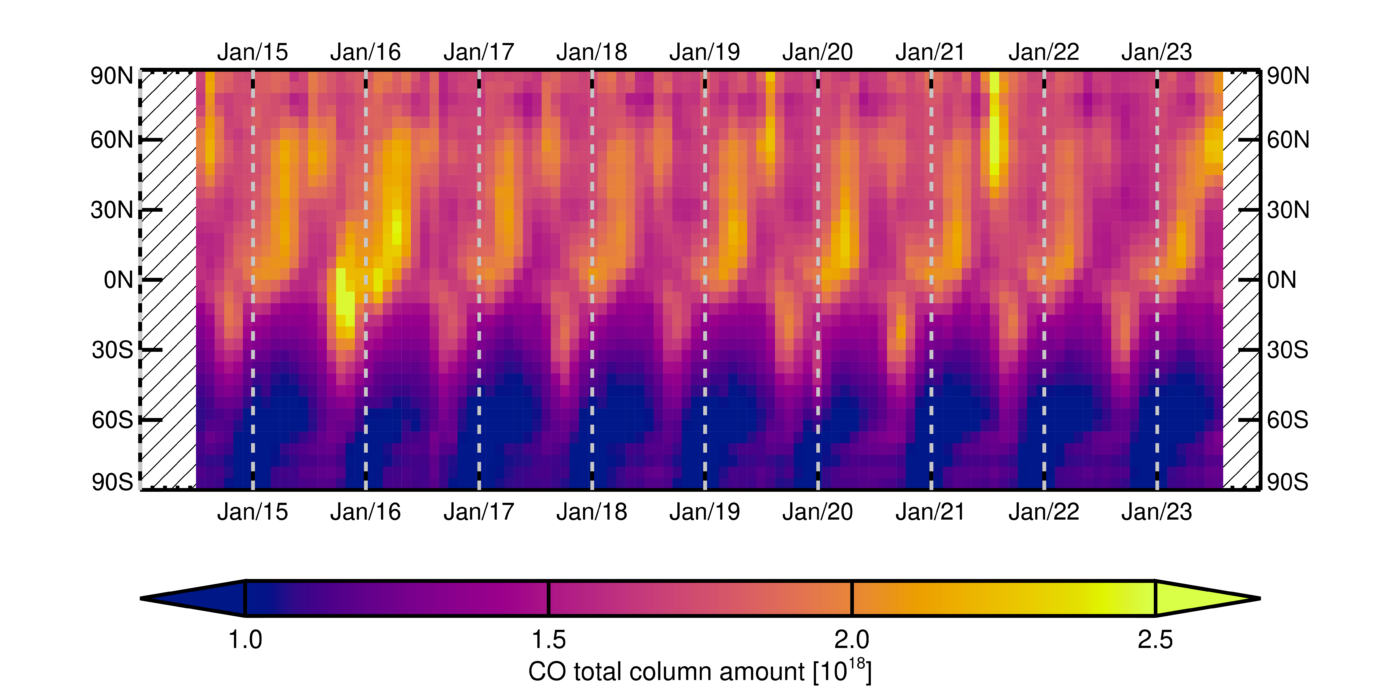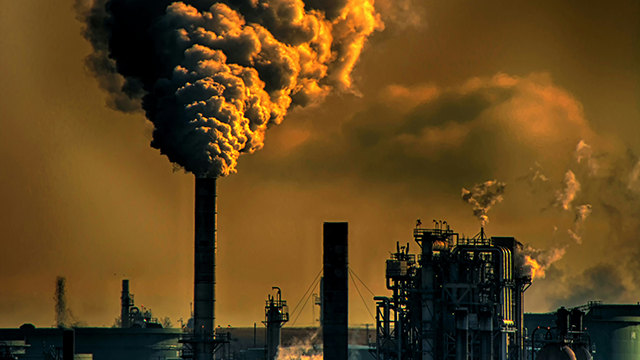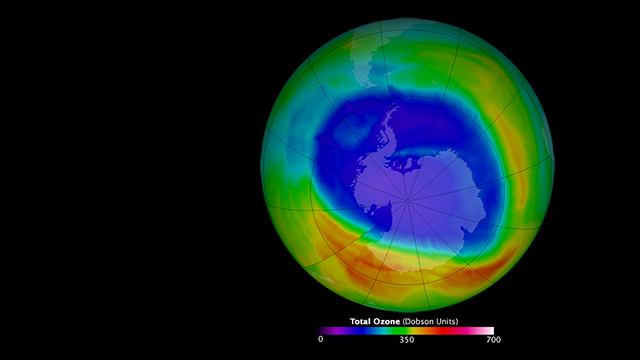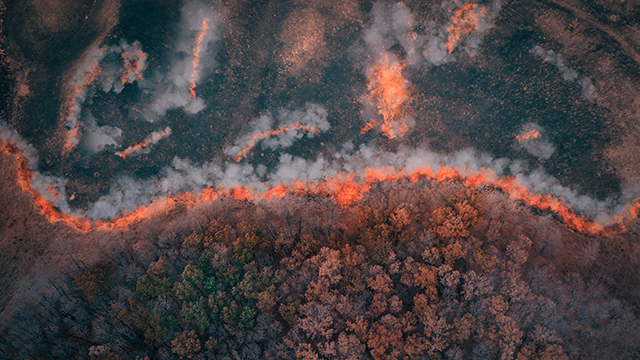
Carbon Monoxide and Reactive trace gases
Long-term satellite observations of carbon monoxide and other reactive trace gases in the atmosphere help us to understand the role of these gases in a changing climate and the change in these gases over time.
Carbon monoxide is released from any material that is burned. There are a number of anthropogenic and natural sources, notably forest fires, transport, and domestic coal, gas, oil or wood burning for heat. Carbon monoxide is an indirect greenhouse gas although it plays a major role in atmospheric chemistry, notably it reacts with the OH radical which is an important removal mechanism for potent greenhouse gases such as methane. Where carbon monoxide is combined with other pollutants and sunshine, it plays a role in ozone production near the Earth’s surface, a key component of urban smog.

At NCEO Leicester we specialise in the retrieval, validation and exploitation of carbon monoxide and other reactive trace gases which are linked to wildfire emissions. Data are produced from satellite records such IASI, which span over the last 15 years, making these data suitable for trend analysis. These data also feed in to the NCEO long-term Single Science and Earth Observation Climate Information Service (EOCIS) programs. The algorithms are also used with the NCEO International Science program to investigate plant health.
Carbon monoxide acts as an indirect greenhouse gas in the atmosphere, meaning increasing levels of CO can lead to increases in other greenhouse gases in the atmosphere as methane (CH4)
Carbon monoxide and reactive trace gas data are used across NCEO by modellers, keen to incorporate these data to help better understand sources of these gases and to make predictions about the future emissions.
Projects
The products are developed within the NCEO long-term single science (LTS-S) work strands and the Earth Observation Climate Information Service (EOCIS) program.
Tools
The trace gas data are derived from measurements made by Low Earth Orbit satellites such as Infrared Atmospheric Sounding Interferometer (IASI) and the Cross-track Infrared Sounder (CrIS), using algorithms designed and produced at NCEO Leicester.
Contact
For further information contact Dr David Moore, NCEO Research Scientist.
References
Constraining the budget of atmospheric carbonyl sulfide using a 3-D chemical transport model Atmospheric Chemistry and Physics 2023-09-08 | Journal article DOI: 10.5194/acp-23-10035-2023 Part of ISSN: 1680-7324 CONTRIBUTORS: Michael P. Cartwright; Richard J. Pope; Jeremy J. Harrison; Martyn Chipperfield; Chris Wilson; Wuhu Feng; David P. Moore; Parvadha Suntharalingam
Atmospheric distribution of HCN from satellite observations and 3-D model simulations Atmospheric Chemistry and Physics 2023-04-24 | Journal article DOI: 10.5194/acp-23-4849-2023 Part of ISSN: 1680-7324 CONTRIBUTORS: Antonio Giovanni Bruno; Jeremy J. Harrison; Martyn Chipperfield; David P. Moore; Richard J. Pope; Chris Wilson; Emmanuel Mahieu; Justus Notholt
Nocturnal survival of isoprene linked to formation of upper tropospheric organic aerosol Science 2022-02-04 | Journal article DOI: 10.1126/science.abg4506 CONTRIBUTORS: Paul I. Palmer; Margaret R. Marvin; Richard Siddans; Brian J. Kerridge; David P. Moore
Impact of the June 2018 Saddleworth Moor wildfires on air quality in northern England Environmental Research Communications 2020-03-13 | Journal article DOI: 10.1088/2515-7620/ab7b92 Part of ISSN: 2515-7620

Observing the atmosphere: Research areas


Aerosols


Carbon Dioxide


Other greenhouse gases


Methane


Ozone

Other related content
Under the links below you can find many of the different tools that are available in the public domain that NCEO scientists find useful. We hope this will be a useful collection to help anyone using EO datasets to understand the Earth System.


